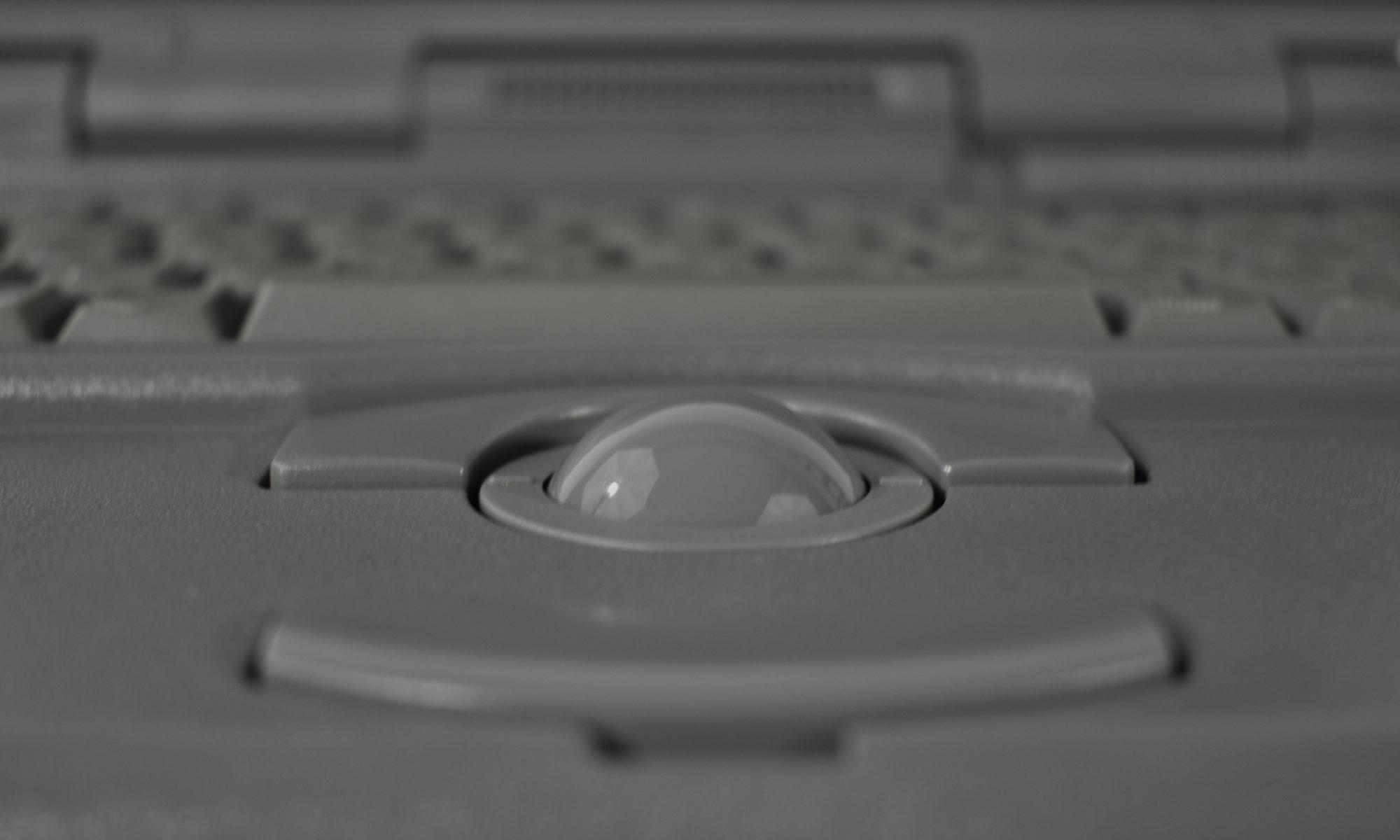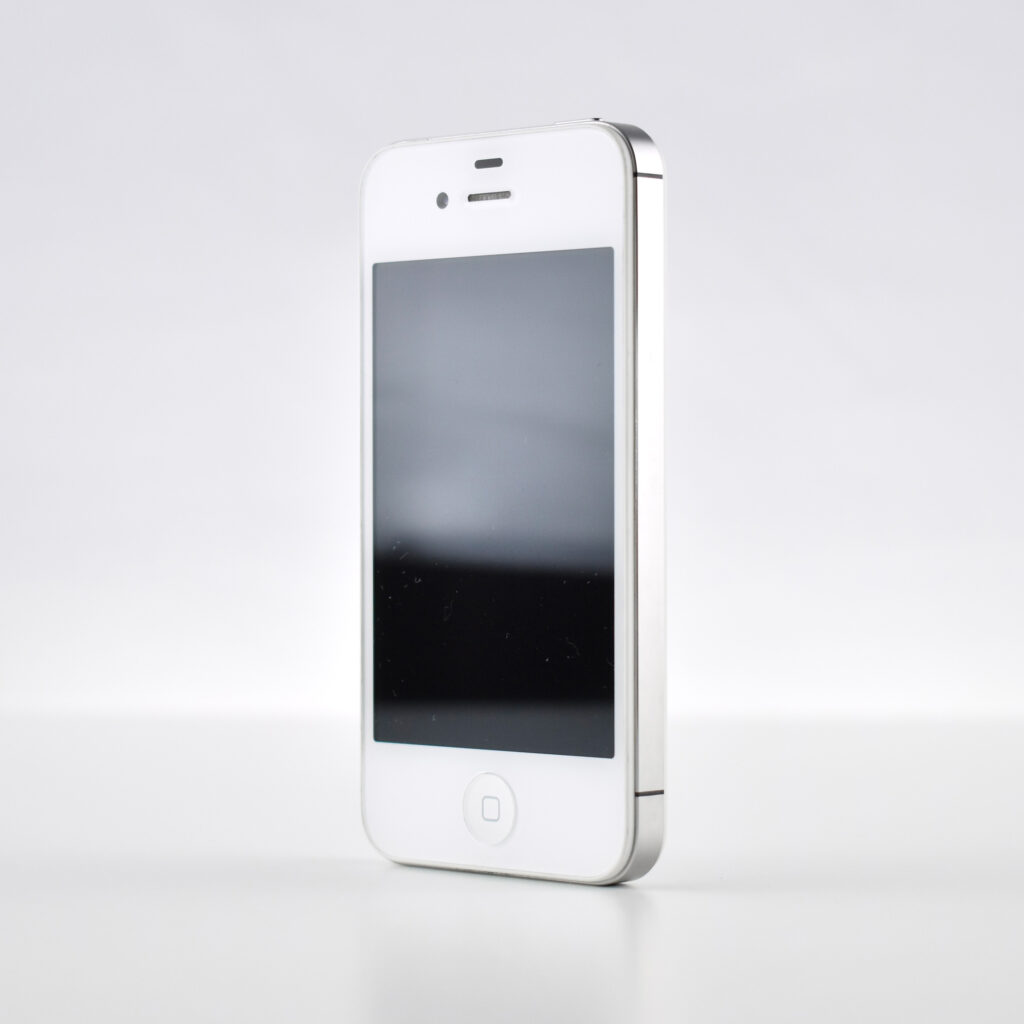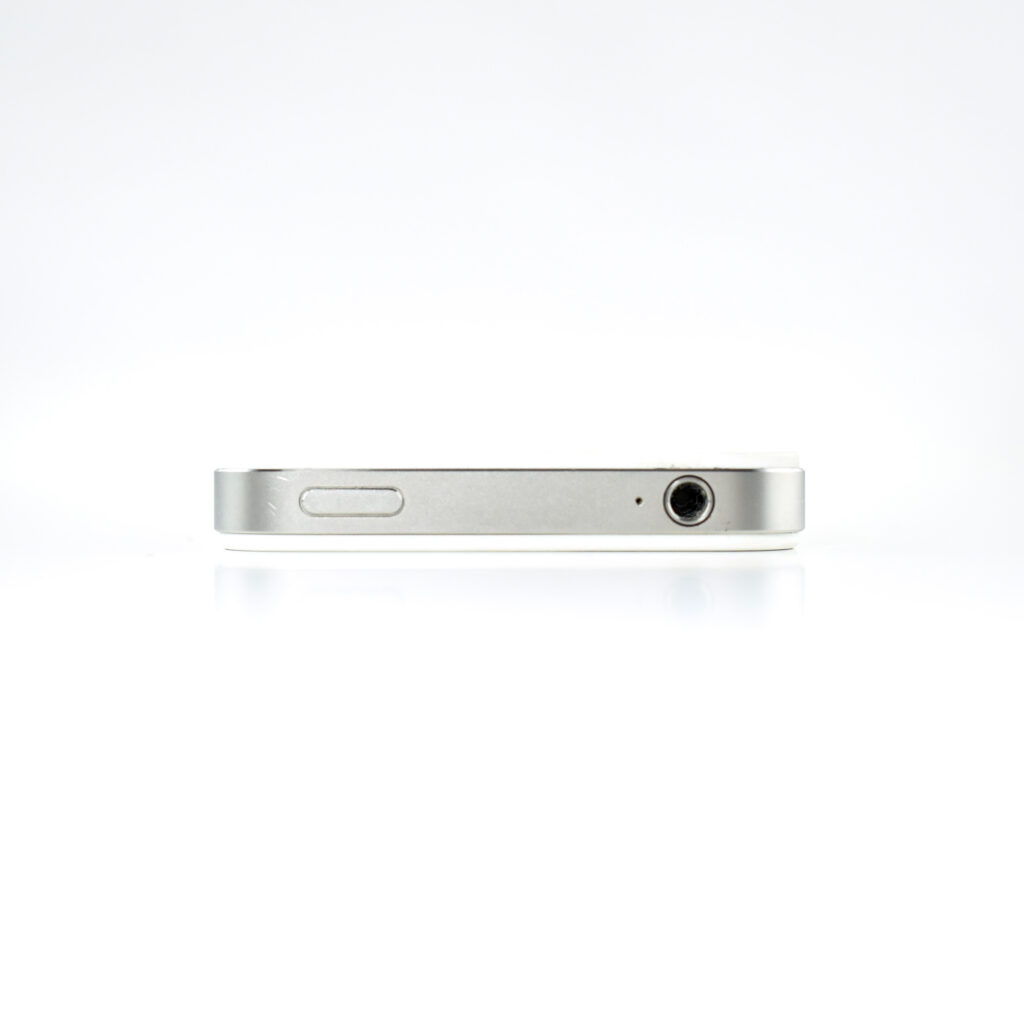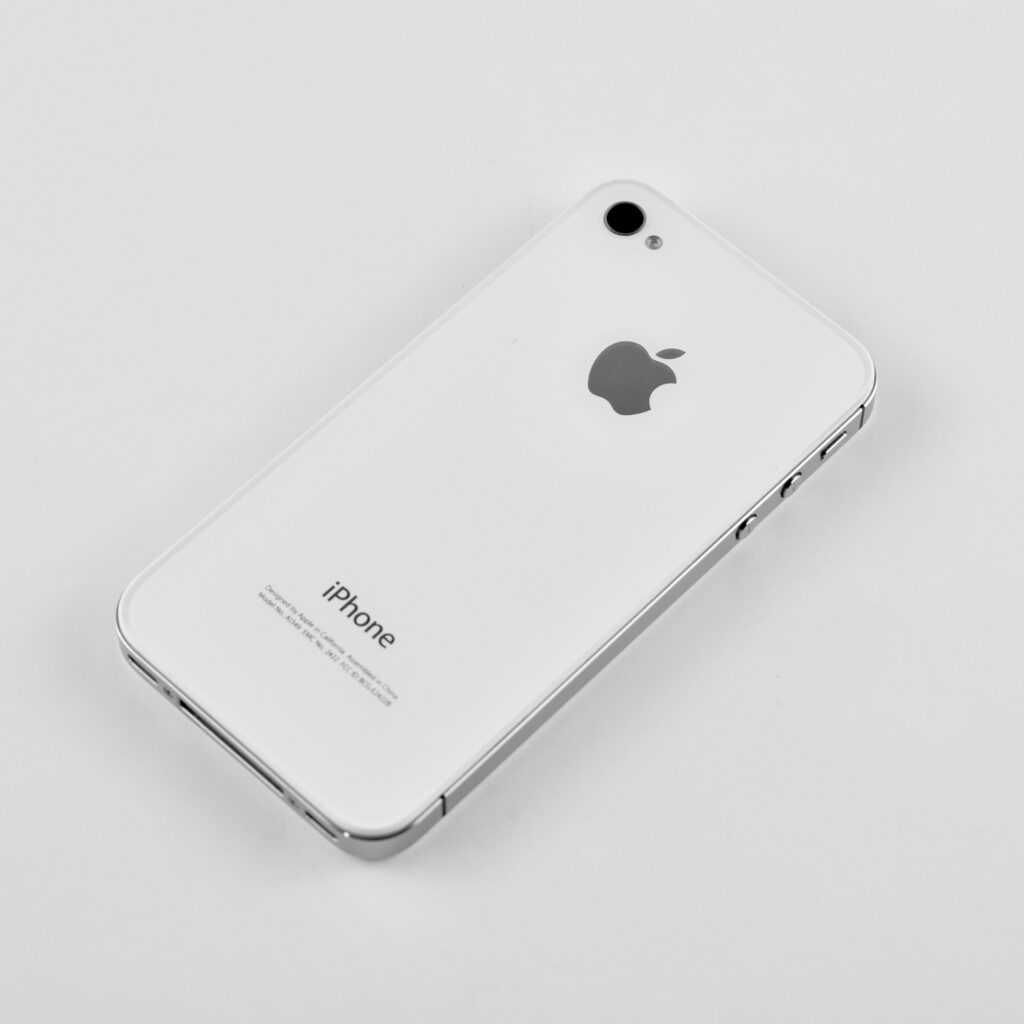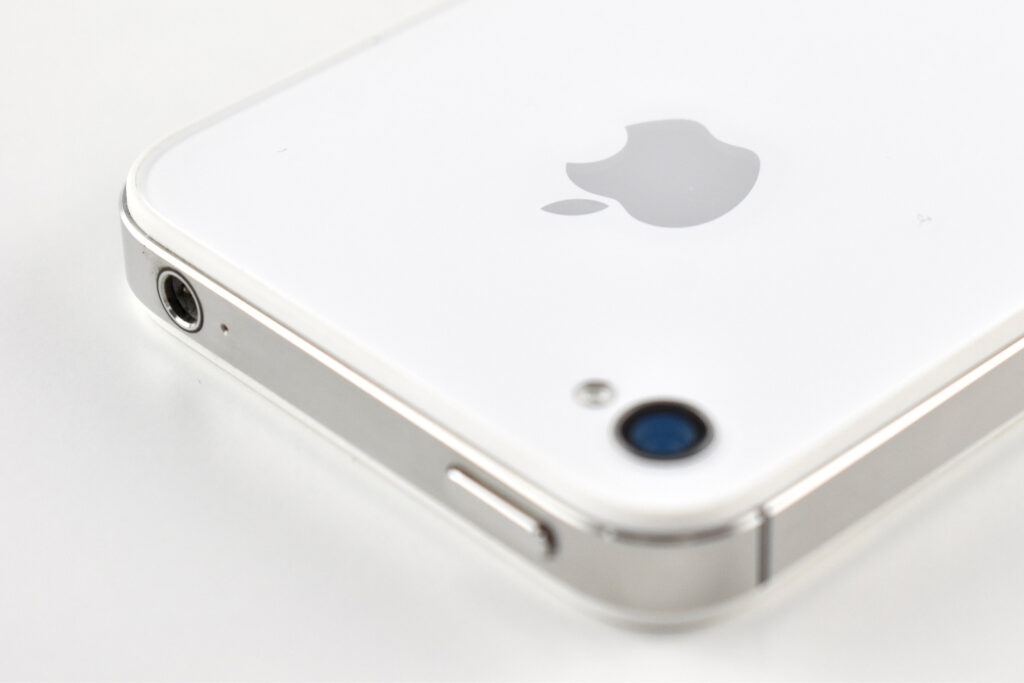The iPhone 4 represented a major design leap from the previous iPhone models. The iPhone 4 used an all stainless steel body, a 3.5-inch Retina display at 960×640 (326 ppi), a chemically hardened “aluminosilcate” over the front display, and a chemically hardened glass back.
A white option of the iPhone 4 was announced, but it did not ship for over a year after the announcement. Engadget (and other news sites) reported that manufacturing problems were the cause of the white iPhone 4 delays. Specifically, the factory in China took more time than expected to work out “the perfect combination of paint thickness and opacity.”
The iPhone 4 was the first iPhone with dual front and back cameras: a 5 megapixel HD video/still camera (720p at 30 FPS), a 5X digital zoom, and an LED flash on the rear; and a VGA-quality video/still camera on the front designed for video conferencing over Wi-Fi using FaceTime. Both cameras used noise-cancelling microphones.
The iPhone 4 was powered by an A4 processor and added additional mobile network support. It included a digital compass, GPS, an accelerometer, and a new 3-axis gyroscope.
This iPhone 4 example is white.
